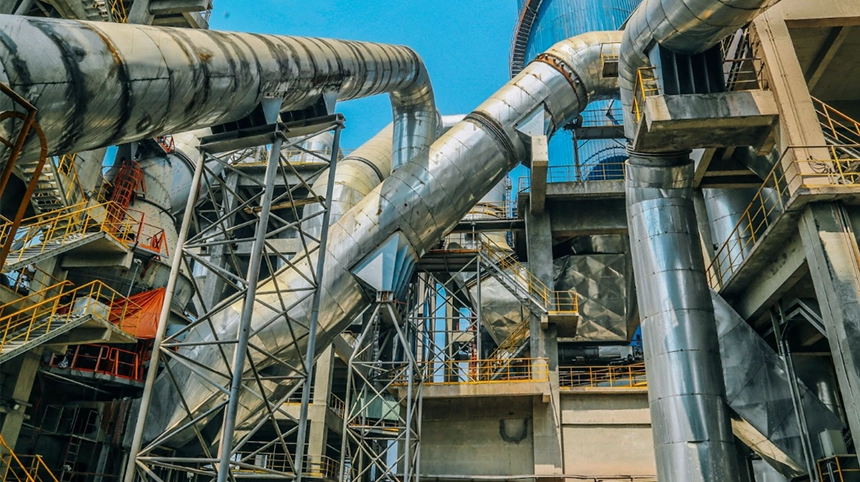DEF Fluid Chemistry: 4 Key Components for Effective NOx Control

Introduction
It’s all about cleaner air. Pursuing cleaner air and stricter emission standards, diesel exhaust fluid (DEF) underpins selective catalytic reduction (SCR) systems. What constitutes DEF? DEF fluid—a seemingly straightforward blend of 32.5% urea and 67.5% deionized water—propels NOx reduction. Its chemistry dictates SCR system performance. What purpose does DEF serve? It converts NOx into harmless nitrogen and water. This article probes the microscopic realm of DEF, disclosing its constituents, dissecting its beneficial and detrimental components, and showcasing how Guantong’s engineering optimizes emission control systems for robust NOx management.
Two “Effective Components”

Urea (CO(NH₂)₂)
Urea in DEF serves as the “ammunition” for NOx reduction. What is urea in DEF? Urea (CO(NH₂)₂) serves as a safe ammonia carrier. It decomposes within SCR systems to yield ammonia (NH₃). This ammonia engages with NOx, generating nitrogen (N₂) and water. Thus, it advances nitrogen applications as a harmless byproduct.
Key reactions include:
- (NH₂)₂CO → NH₃ + HNCO (urea decomposition)
- HNCO + H₂O → NH₃ + CO₂ (hydrolysis)
These reactions ensure up to 90% NOx reduction efficiency. What is DEF made of? The 32.5% high-purity urea solution proves vital. It guarantees efficient ammonia production, devoid of byproducts. What is diesel exhaust fluid? It’s a key reducing agent for DEF fluid for diesel engines.
Deionized Water
The 67.5% of DEF composition is deionized water, acting as a pure “delivery vehicle” to ensure urea is precisely injected and atomized. Its purity is vital to prevent impurities from disrupting the SCR system reactions. Within the SCR catalyst material, DEF fluid guarantees uniform spraying. This obviates blockages. Ultimately, it facilitates effective NOx reduction.
Learn about Guantong’s DEF solutions for optimized NOx reduction.
Two “Harmful Components” (Must Be Strictly Controlled)
Mineral Ions (Calcium, Magnesium, etc.)
Substandard DEF quality can admit mineral ions (e.g., calcium, magnesium). These function as “scaling agents.” They accrete upon catalyst surfaces and impede micropores. Ultimately, this precipitates SCR system failure. Research shows calcium ions can reduce catalyst efficiency by 20% [source: Applied Catalysis B, 2007]. Is all DEF the same? Only ISO 22241-compliant DEF fluid prevents such issues.
Organic Impurities and Biuret
Biuret constitutes a byproduct of urea production. If present within DEF fluid, it decomposes at elevated temperatures. This engenders deposits or instigates side reactions. Ultimately, these poison the catalyst. DEF quality requires biuret content <0.3% to maintain SCR system activity. Other organic impurities similarly reduce catalyst lifespan.
ISO 22241: The “Law” of Chemical Purity
The ISO 22241 standard guarantees DEF quality. It imposes strict limits on harmful components. These encompass biuret (below 0.3%) and calcium/magnesium (below 0.5 mg/kg). This safeguards costly SCR systems. What does SCR mean? Selective catalytic reduction, a process that relies on DEF fluid for NOx reduction. What is a SCR system? It’s the technology enabling efficient emissions control. And that means only ISO-compliant DEF guarantees long-term catalyst performance, preventing ammonia slip and efficiency losses.
Table 1: ISO 22241 DEF Impurity Limits
| Impurity | Maximum Limit |
| Biuret | 0.3% |
| Calcium | 0.5 mg/kg |
| Magnesium | 0.5 mg/kg |
| Phosphate | 0.5 mg/kg |
Guantong’s Chemical Engineering Approach

Guantong comprehends DEF chemistry. Beyond that, it integrates this knowledge into engineering design. This serves to augment SCR technology:
- Urea Pyrolysis Furnace: This furnace operates at 350–600°C within a controlled environment. It completely transforms urea solution into ammonia. This precludes biuret byproducts.
- Corrosion-Resistant Materials: Systems use durable materials to extend DEF tank and pipeline lifespan.
- Multi-Stage Filtration: Coalescing filters guarantee DEF fluid purity. This forestalls contaminants from gaining ingress into the SCR system.
Process control instruments and Coriolis flow meters attain ±0.1% metering accuracy. This curtails ammonia slip. Consequently, it amplifies efficiency by 10%. Instrumentation monitors ammonia levels for system stability.
Case Study: A power plant using Guantong’s urea pyrolysis technology reduced NOx emissions to <50mg/Nm³ and maintenance costs by 20%.
Explore Guantong’s SCR technology for optimized NOx control.
Conclusion
NOx control hinges on precise chemical reactions. Diesel exhaust fluid propels efficient NOx reduction via SCR systems. However, its performance hinges upon DEF quality and system design. AdBlue DEF comports with standard DEF regarding ISO-compliant composition. Guantong’s urea pyrolysis and SCR technology fuse chemistry and engineering, yielding superior results. Opt for Guantong to fortify your emission control system. This will attain dependable industrial emissions management.
